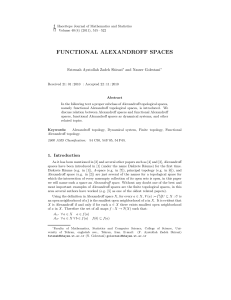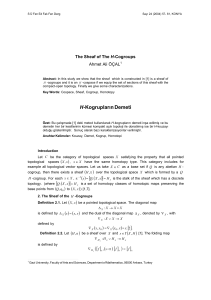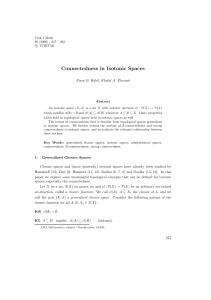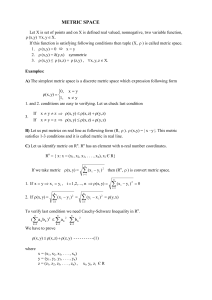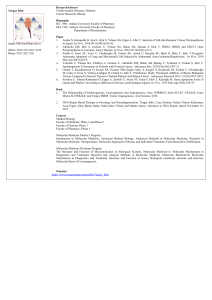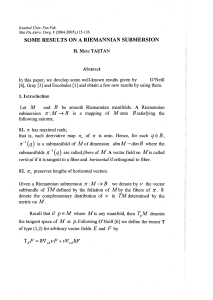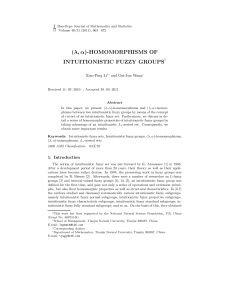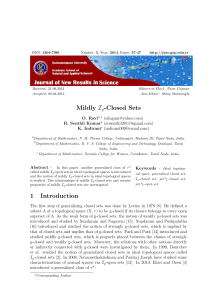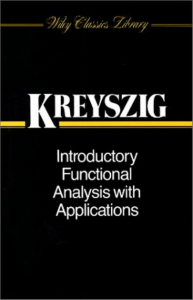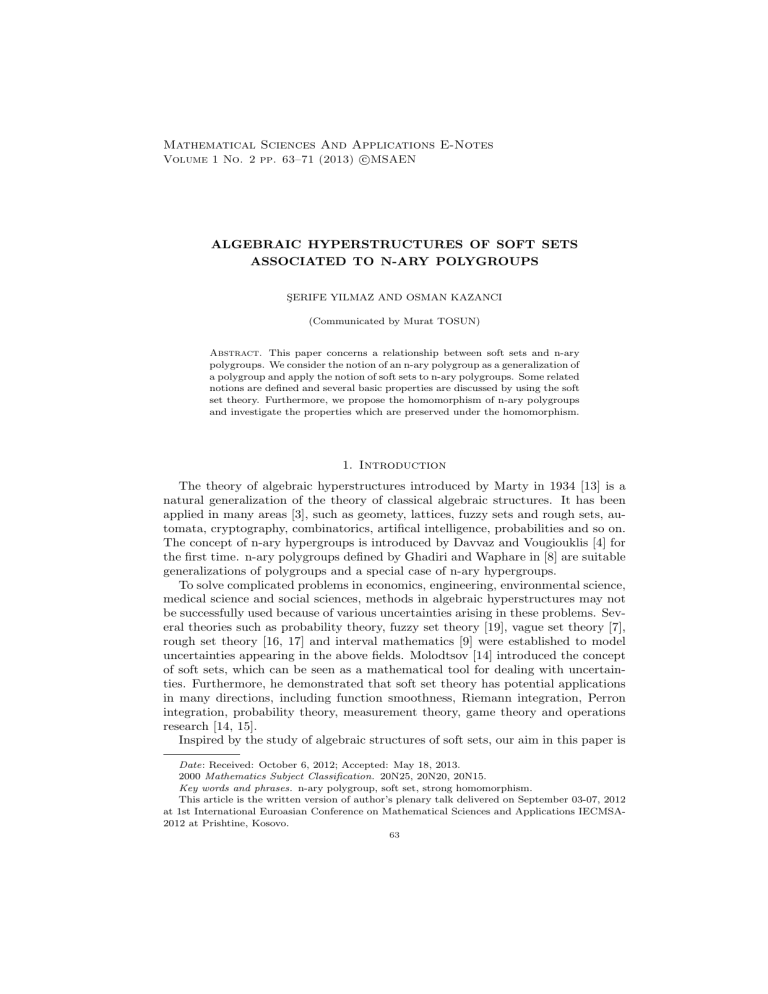
Mathematical Sciences And Applications E-Notes
c
Volume 1 No. 2 pp. 63–71 (2013) MSAEN
ALGEBRAIC HYPERSTRUCTURES OF SOFT SETS
ASSOCIATED TO N-ARY POLYGROUPS
ŞERIFE YILMAZ AND OSMAN KAZANCI
(Communicated by Murat TOSUN)
Abstract. This paper concerns a relationship between soft sets and n-ary
polygroups. We consider the notion of an n-ary polygroup as a generalization of
a polygroup and apply the notion of soft sets to n-ary polygroups. Some related
notions are defined and several basic properties are discussed by using the soft
set theory. Furthermore, we propose the homomorphism of n-ary polygroups
and investigate the properties which are preserved under the homomorphism.
1. Introduction
The theory of algebraic hyperstructures introduced by Marty in 1934 [13] is a
natural generalization of the theory of classical algebraic structures. It has been
applied in many areas [3], such as geomety, lattices, fuzzy sets and rough sets, automata, cryptography, combinatorics, artifical intelligence, probabilities and so on.
The concept of n-ary hypergroups is introduced by Davvaz and Vougiouklis [4] for
the first time. n-ary polygroups defined by Ghadiri and Waphare in [8] are suitable
generalizations of polygroups and a special case of n-ary hypergroups.
To solve complicated problems in economics, engineering, environmental science,
medical science and social sciences, methods in algebraic hyperstructures may not
be successfully used because of various uncertainties arising in these problems. Several theories such as probability theory, fuzzy set theory [19], vague set theory [7],
rough set theory [16, 17] and interval mathematics [9] were established to model
uncertainties appearing in the above fields. Molodtsov [14] introduced the concept
of soft sets, which can be seen as a mathematical tool for dealing with uncertainties. Furthermore, he demonstrated that soft set theory has potential applications
in many directions, including function smoothness, Riemann integration, Perron
integration, probability theory, measurement theory, game theory and operations
research [14, 15].
Inspired by the study of algebraic structures of soft sets, our aim in this paper is
Date: Received: October 6, 2012; Accepted: May 18, 2013.
2000 Mathematics Subject Classification. 20N25, 20N20, 20N15.
Key words and phrases. n-ary polygroup, soft set, strong homomorphism.
This article is the written version of author’s plenary talk delivered on September 03-07, 2012
at 1st International Euroasian Conference on Mathematical Sciences and Applications IECMSA2012 at Prishtine, Kosovo.
63
64
ŞERIFE YILMAZ AND OSMAN KAZANCI
to initiate the study on the connection between soft sets and n-ary polygroups. We
apply the notion of soft sets to n-ary polygroups. Some related notions are defined
and several basic properties are discussed by using the soft set theory. Furthermore, the concept of a soft homomorphism of n-ary polygroups is introduced and
it is investigated which properties are preserved under this homomorphism.
2. Preliminaries of n-ary polygroup and soft set
In this section, we review some notions and results concerning n-ary polygroups
and soft sets.
Let H be a non-empty set and f be a mapping f : H ×H → ℘∗ (H), where ℘∗ (H)
is the set of all non-empty subsets of H. Then f is called a binary hyperoperation
on H.
Definition 2.1. ([2]) A polygroup is a system ℘ =< P, ◦, e,−1 >, where e ∈ P , −1
is a unitary operation on P, ◦ maps P × P into the non-empty subsets of P and the
following axioms hold for all x, y, z in P :
(1) (x ◦ y) ◦ z = x ◦ (y ◦ z),
(2) e ◦ x = x ◦ e = x,
(3) x ∈ y ◦ z implies y ∈ x ◦ z −1 and z ∈ y −1 ◦ x.
The following elemantary facts concerning polygroups follow easily from the
−1
−1
−1 −1
axioms: e ∈ x◦ x−1 ∩ x−1
◦
x,
e
=
e,
x
= x and (x ◦ y) = y −1 ◦ x−1 ,
where A−1 = a−1 |a ∈ A .
Example 2.1. Suppose H is a subgroup of a group G. Define a system
G//H = {HgH|g ∈ G} , ∗, H,−1
−1
where (HgH)
= Hg −1 H and (Hg1 H) ∗ (Hg2 H) = {Hg1 hg2 H|h ∈ H}. The
algebra of double cosets G//H is a polygroup introduced in Dresher and Ore [5].
We denote by H n , the cartesian product H ×...×H where H appears n times. An
element of H n will be denoted by (x1 , ..., xn ) where xi ∈ H for any i with 1 ≤ i ≤ n.
In general, a mapping f : H n → ℘∗ (H) is called an n-ary hyperoperation and n is
called the arity of the hyperoperation f .
Let f be an n-ary hyperoperation on H and
f (A1 , ..., An ) = ∪ {f (x1 , ..., xn ) |xi ∈ Ai , i = 1, ..., n}.
We shall use the following abbreviated notation: The sequence xi , xi+1 , ..., xj will
be denoted by xji . For j < i, xji is the empty set. Thus
f (x1 , ..., xi , yi+1 , ..., yj , zj+1 , ..., zn )
j
i
n
will be written as f x1 , yi+1
, zj+1
. If m = k (n − 1) + 1, then the m-ary hyperoperation g given by
k(n−1)+1
k(n−1)+1
g x1
= f (f (..., f (f (xn1 ) , x2n−1
n+1 ), ...), x(k−1)(n−1)+2 )
{z
}
|
k
will be denoted by f(k) .
Definition 2.2. ([8]) An n-ary polygroup is a multivalued system < P, f, e,−1 >,
where e ∈ P , −1 is a unitary operation on P , f is an n-ary hyperoperation on P
and the following axioms hold for all i, j ∈ 1, ..., n, x1 , ..., x2n−1 , x ∈ P :
ALGEBRAIC HYPERSTRUCTURES OF SOFT SETS
65
2n−1 n+j−1
n+i−1
2n−1
(1) f xi−1
, xn+i = f xj−1
, xn+j
,
1 , f xi
1 , f xj
(2) e is a unique element such that f (e, ..., e, x, e, ..., e) = x,
−1
−1
−1
(3) x ∈ f (xn1 ) implies xi ∈ f x−1
i−1 , ..., x1 , x, xn , ..., xi+1 .
It is clear that every 2-ary polygroup is a polygroup.
A non-empty subset S of an n-ary polygroup P is an n-ary subpolygroup if
< S, f, e,−1 > is an n-ary polygroup, i.e., if it is closed under the hyperoperation f ,
e ∈ S and x ∈ S implies x−1 ∈ S.
Now, we review some notions concerning soft sets. The definitions may be found
in references [14, 12, 1, 18] . Let U be an initial universe set and E be a set of
parameters. P (U ) denotes the power set of U and A ⊆ E.
Definition 2.3. ([14]). A pair (η, A) is called a soft set over U , where η is a setvalued function η : A → P (U ) can be defined as η(x) = {y ∈ U | (x, y) ∈ R} for
all x ∈ A and R will refer to an arbitrary binary relation between an element of A
and an element of U , that is, R is a subset of A × U . In fact, a soft set over U is
a parameterized family of subsets of the universe U . For a soft set (η, A), the set
Supp(η, A) = {x ∈ A | η(x) 6= ∅} is called the support of the soft set (η, A) and the
soft set (η, A) is called a non-null if Supp(η, A) 6= ∅ [6].
Definition 2.4. ([10]). Let (η, A) and (γ, B) be soft sets over a common universe
U.
e
(i) (η, A) is said to be a soft subset of (γ, B), denoted (η, A)⊆(γ,
B), if A ⊆ B
and η(a) ⊆ γ(a) for all a ∈ A.
(ii) (η, A) and (γ, B) are said to be soft equal, denoted (η, A) = (γ, B), if
e
e A).
(η, A)⊆(γ,
B) and (γ, B)⊆(η,
Definition 2.5. ([14, 12]).
(i) The restricted-intersection( or bi-intersection) of two soft sets (η, A) and
(γ, B) over a common universe U is defined as the soft set (δ, C) = (η, A) ∩
(γ, B), where C = A ∩ B 6= ∅ and δ(c) = η(c) ∩ γ(c) for all c ∈ C.
(ii) The extended intersection of two soft sets (η, A) and (γ, B) over a common
e (γ, B), where C = A∪B
universe U is defined as the soft set (δ, C) = (η, A)∩
and for all c ∈ C,
η(c)
if c ∈ A\B
γ(c)
if c ∈ B\A
δ(c) =
η(c) ∩ γ(c) if c ∈ A ∩ B.
Definition 2.6. ([12]).
(i) The restricted-union of two soft sets (η, A) and (γ, B) over a common universe U is defined as the soft set (δ, C) = (η, A)∪(γ, B), where C = A∩B 6=
∅ and δ(c) = η(c) ∪ γ(c) for all c ∈ C.
(ii) The extended-union of two soft sets (η, A) and (γ, B) over a common unie (γ, B), where C = A ∪ B
verse U is defined as the soft set (δ, C) = (η, A)∪
66
ŞERIFE YILMAZ AND OSMAN KAZANCI
and for all c ∈ C,
δ(c) =
η(c)
if c ∈ A\B
γ(c)
if c ∈ B\A
η(c) ∪ γ(c) if c ∈ A ∩ B.
Definition 2.7. ([14, 1]).
(i) The ∧-intersection of two soft sets (η, A) and (γ, B) over a common universe
e (γ, B) where C = A × B and
U is defined as the soft set (δ, C) = (η, A)∧
δ(a, b) = η(a) ∩ γ(b) for all (a, b) ∈ C.
(ii) The ∨- union of two soft sets (η, A) and (γ, B) over a common universe
e (γ, B), where C = A × B and
U is defined as the soft set (δ, C) = (η, A)∨
δ(a, b) = η(a) ∪ γ(b) for all (a, b) ∈ C.
Definition 2.8. ([1]). Let (η, A) and (γ, B) be two soft sets over U and V , respectively. The cartesian product of two soft sets (η, A) and (γ, B) is defined as the soft
e
set (δ, A × B) = (η, A)×(γ,
B), where δ(x, y) = η(x) × γ(y) for all (x, y) ∈ A × B.
3. Soft n-ary polygroups
In this section, we give the algebraic structure of soft n-ary polygroups and
discuss some properties.
Definition 3.1. Let (η, A) be a soft set over P . Then (η, A) is called a soft nary polygroup over P if η(x) is an n-ary subpolygroup of P for all x ∈ A; for our
convenience, the empty set ∅ is regarded as an n-ary subpolygroup of P .
Example 3.1. Let P = {e, x, y} be a set endowed with a 3-ary hyperoperation f
as follows:
f (e, e, e) = e, f (x, x, e) = {e, y}, f (y, e, e) = y
f (e, e, x) = x, f (x, x, x) = {x, y}, f (y, e, x) = {x, y}
f (e, e, y) = y, f (x, x, y) = P , f (y, e, y) = {e, x}
f (e, x, e) = x, f (x, e, e) = x, f (y, x, e) = {x, } y
f (e, x, x) = {e, y}, f (x, e, x) = {e, y}, f (y, x, x) = P
f (e, x, y) = {x, y}, f (x, e, y) = {x, y}, f (y, x, y) = P
f (e, y, e) = y, f (x, y, e) = {x, y}, f (y, y, e) = {e, x}
f (e, y, x) = {x, y}, f (x, y, x) = P , f (y, y, x) = P
f (e, y, y) = {e, x}, f (x, y, y) = P , f (y, y, y) = {x, y}
It is easy to see that < P, f, e,−1 > is a 3-ary polygroup. Let (η, A) be a soft
set over P , where A = {1, 2, 3} and η : A → P (P ) be a set-valued function defined
by
η(x) = {y ∈ P | (x, y) ∈ R}
for all x ∈ A, where R = {(1, e), (3, e), (3, x), (3, y)}. Then η(1) = {e}, η(2) = ∅ and
η(3) = P are 3-ary subpolygroups of P . Therefore (η, A) is a soft 3-ary polygroup
over P .
Example 3.2. Consider the polygroup P = S3 // < (132) >. Then
{HσH|σ ∈ S3 } = {H, A} where H =< (132) >= {(1) , (123) , (132)} and
A = {(1) , (12) , (13) , (23)}. Let (η, A) be a soft set over P , where A = {a, b, c, d}
and η : A → P (P ) be a set-valued function defined by
η(x) = {y ∈ P | (x, y) ∈ R}
ALGEBRAIC HYPERSTRUCTURES OF SOFT SETS
67
for all x ∈ A, where R = {(a, H), (b, A), (c, H), (c, A), (d, H)}. Then η(a) = η(d) =
{H}, η(b) = {A} and η(c) = {H, A}. Since η(b) = {A} is not a subpolygroup of
S3 // < (132) >. Therefore (η, A) is not a soft polygroup over S3 // < (132) >.
Theorem 3.1. Let (η, A) and (γ, B) be two soft n-ary polygroups over P .
e (γ, B) is a soft n-ary polygroup over P .
(i) The extended intersection (η, A)∩
(ii) The restricted intersection (η, A) ∩ (γ, B), with A ∩ B 6= ∅, is a soft n-ary
polygroup over P .
Proof. (i) By definition 2.5 (ii), we
C = A ∪ B and for all c ∈ C,
η(c)
γ(c)
δ(c) =
η(c) ∩ γ(c)
e (γ, B) = (δ, C), where
can write (η, A)∩
if c ∈ A\B
if c ∈ B\A
if c ∈ A ∩ B.
For all x ∈ C, if x ∈ A\B, then δ(x) = η(x) is an n-ary subpolygroup of P , since
(η, A) is a soft n-ary polygroup over P ; if x ∈ B\A, then δ(x) = γ(x) is an n-ary
subpolygroup of P , since (γ, A) is a soft n-ary polygroup over P ; if x ∈ A ∩ B,
then δ(x) = η(x) ∩ γ(x) is an n-ary subpolygroup of P , since the intersection of
any two n-ary subpolygroups of P is also an n-ary subpolygroup of P . Thus we
conclude that δ(x) is an n-ary subpolygroup of P for all x ∈ C. It follows that
e (γ, B) is a soft n-ary polygroup over P . (ii)According to Definition
(δ, C) = (η, A)∩
2.5(i), by assumption and the proof (i), it follows that (η, A) ∩ (γ, B) is a soft n-ary
polygroup over P . Corollary 3.1. Let (η, A) and (γ, A) be two soft n-ary polygroups over P . Then
e (γ, A) is a soft n-ary polygroups over P .
the extended intersection (η, A)∩
Theorem 3.2. Let (η, A) and (γ, B) be two soft n-ary polygroups over P .
e (γ, B) is a soft n-ary polygroup
(i) If A∩B = ∅, then the extended union (η, A)∪
over P .
(ii) If η(x) ⊆ γ(x) or γ(x) ⊆ η(x) for all x ∈ A ∩ B, then the restricted union
(η, A) ∪ (γ, B) is a soft n-ary polygroup over P .
e (γ, B) = (δ, C), where
Proof. (i) By Definition 2.6 (ii), we can write (η, A)∪
C = A ∪ B. Since A ∩ B = ∅, so for all x ∈ C, either x ∈ A\B or x ∈ B\A. If
x ∈ A\B, then δ(x) = η(x) is an n-ary subpolygroup of P , since (η, A) is a soft
n-ary polygroup over P ; if x ∈ B\A, then δ(x) = γ(x) is an n-ary subpolygroup of
e (γ, B)
P , since (γ, A) is a soft n-ary polygroup over P . Therefore (δ, C) = (η, A)∪
is a soft n-ary polygroup over P . (ii)According to Definition 2.6 (i), by assumption
and the proof (i), it follows that (η, A) ∪ (γ, B) is a soft n-ary polygroup over P . Theorem 3.3. Let (η, A) and (γ, B) be two soft n-ary polygroups over P . Then
e (γ, B) is a soft n-ary polygroup over P .
the ∧-intersection (η, A)∧
e (γ, B) = (δ, C), where C = A×
Proof. By Definition 2.7 (i), we can write (η, A)∧
B and δ(x, y) = η(x) ∩ γ(y) for all (x, y) ∈ C. Since (η, A) and (γ, B) are soft n-ary
polygroups over P , we deduce that η(x) and γ(y) are both n-ary subpolygroups of P
and their intersection is also an n-ary subpolygroup of P . So δ(x, y) = η(x)∩γ(y) is
e (γ, B)
an n-ary subpolygroup P for all (x, y) ∈ C. Hence the ∧-intersection (η, A)∧
is a soft n-ary polygroup over P .
68
ŞERIFE YILMAZ AND OSMAN KAZANCI
Theorem 3.4. Let (η, A) and (γ, B) be two soft n-ary polygroups over P . If η(a) ⊆
e (γ, B) is a soft
γ(b) or γ(b) ⊆ η(a) for all (a, b) ∈ A × B, then the ∨-union (η, A)∨
n-ary polygroup over P .
Proof. Assume that (η, A) and (γ, B) be two soft n-ary polygroups over P .
e (γ, B) = (δ, C), where C = A × B
By Definition 2.7 (ii), we can write (η, A)∨
and δ(x, y) = η(x) ∪ γ(y) for all (x, y) ∈ C. Since (η, A) and (γ, B) are soft
n-ary polygroups over P , we deduce that the set η(x) and γ(y) are both n-ary
subpolygroups of P . By assumption, δ(x, y) = η(x) ∪ γ(y) is an n-ary subpolygroup
e (γ, B) is a soft n-ary polygroup
of P for all (x, y) ∈ C. Hence the ∨-union (η, A)∨
over P .
Theorem 3.5. Let (η, A) and (γ, B) be two soft n-ary polygroups over P1 and P2 ,
e
respectively. Then the cartesian product (η, A)×(γ,
B) is a soft n-ary polygroup
over P1 × P2 .
e
Proof. By Definition 2.8., we can write (η, A)×(γ,
B) = (δ, C), where C = A×B
and δ(x, y) = η(x) × γ(y). Since (η, A) and (γ, B) are soft n-ary polygroups over
P , we deduce that the set η(x) and γ(y) are both n-ary subpolygroups of P1 and
P2 , respectively. It follows that the cartesian product η(x) × γ(y) is an n-ary
subpolygroup of P1 × P2 for all (x, y) ∈ C. That is δ(x, y) is an n-ary subpolygroup
e
of P for all (x, y) ∈ C. Hence the cartesian product (η, A)×(γ,
B) is a soft n-ary
polygroup over P1 × P2 . Definition 3.2. Let (η, A) be a soft n-ary polygroup over P .
(i) (η, A) is called a trivial soft n-ary polygroup over P if η(x) = {e} for all
x ∈ A.
(ii) (η, A) is called a whole soft n-ary polygroup over P if η(x) = P for all
x ∈ A.
Proposition 3.1. Let (η, A) and (γ, B) be two soft n-ary polygroups over P .
(i) If (η, A) and (γ, B) are trivial soft n-ary polygroups over P , then the restricted intersection (η, A) ∩ (γ, B) is a trivial soft n-ary polygroup over
P.
(ii) If (η, A) and (γ, B) are whole soft n-ary polygroups over P , then the restricted intersection (η, A) ∩ (γ, B) is a whole soft n-ary polygroup over
P.
(iii) If (η, A) is a trivial soft n-ary polygroup over P and (γ, B) is a whole soft
n-ary polygroup over P , then the restricted intersection (η, A) ∩ (γ, B) is a
trivial soft n-ary polygroup over P .
Proposition 3.2. Let (η, A) and (γ, B) be soft n-ary polygroups over P1 and P2 ,
respectively.
(i) If (η, A) and (γ, B) are trivial soft n-ary polygroups over P1 and P2 , respece
tively. Then (η, A)×(γ,
B) are trivial soft n-ary polygroups over P1 × P2 .
(i) If (η, A) and (γ, B) are whole soft n-ary polygroups over P1 and P2 , respece
tively. Then (η, A)×(γ,
B) are whole soft n-ary polygroups over P1 × P2 .
Definition 3.3. Let (η, A) and (γ, B) be two soft sets over the n-ary polygroups P1
and P2 , respectively; f : P1 → P2 , g : A → B be two functions. Then the pair (f, g)
is called a soft function from (η, A) to (γ, B), denoted by (f, g) : (η, A) → (γ, B)
ALGEBRAIC HYPERSTRUCTURES OF SOFT SETS
69
if f (η(x)) = γ(g(x)) for all x ∈ A. If f, g are injective(resp. surjective, bijective),
then (f, g) is called injective(resp. surjective, bijective).
Definition 3.4. Let (η, A) and (γ, B) two soft sets over the n-ary polygroups P1
and P2 , respectively; (f, g) be a soft function from (η, A) to (γ, B).
(i) The image of (η, A) under the soft function (f, g), denoted by (f, g)(η, A) =
(f (η), B), is the soft set over P2 defined by
∪g(x)=y f (η(x)) if y ∈ Img
f (η)(x) =
∅
if otherwise
for all y ∈ B.
(ii) The pre-image of (γ, B) under the soft function (f, g), denoted by
(f, g)−1 (γ, B) = (f −1 (γ), B), is the soft set over P1 defined by f −1 (γ)(y) =
f −1 (γ(y)) for all y ∈ B.
It is clear that (f, g)(η, A) is a soft subset of (γ, B) and (η, A) is a soft subset
(f, g)−1 (γ, B).
Definition 3.5. ([8]). Let < P1 , f, e1 ,−1 > and < P2 , g, e2 ,−1 > be two n-ary
polygroups. A mapping ϕ from P1 to P2 is said to be strong homomorphism if for
every a1 , a2 , ..., an ∈ P1 ,
ϕ (e1 ) = e2 and ϕ (f (an1 )) = g (ϕ (a1 ) , ..., ϕ (an )).
A strong homomorphism ϕ is said to be an isomorphism if f is one to one and
onto. Two n-ary polygroups P1 and P2 are said to be isomorphic if there exists
an isomorphism from P1 onto P2 . In this case, we write P1 ∼
= P2 . Moreover
if ϕ is a strong homomorphism from P1 to P2 , then the kernel of ϕ is the set
Ker (ϕ) = {x ∈ P1 |ϕ (x) = e2 }.
Definition 3.6. Let (η, A) and (γ, B) be two soft n-ary polygroups over P1 and P2 ,
respectively and (f, g) be a soft function from (η, A) to (γ, B). If f is a strong homomorphism from P1 to P2 , then (f, g) is called a soft n-ary polygroup homomorphism
and we say that (η, A) is soft homomorphic to (γ, B) under the soft homomorphism
(f, g). In this definition, if f is an isomorphism from P1 to P2 and g is a surjective
mapping from A to B, then we say that (f, g) is a soft n-ary polygroup isomorphism
and that (η, A) is soft isomorphic to (γ, B) under the soft homomorphism (f, g),
which is denoted by (η, A) ' (γ, B).
Proposition 3.3. The relation ' is an equivalence relation on soft n-ary polygroups.
Theorem 3.6. Let (η, A) and (γ, B) be two soft n-ary polygroups over P1 and
P2 , respectively and (f, g) be a soft n-ary polygroup homomorphism from (η, A) to
(γ, B).
(i) If g is injective, f is surjective and (η, A) is a soft n-ary polygroup over P1 ,
then (f, g)(η, A) is a soft n-ary polygroup over P2 .
(ii) If (γ, B) is a soft n-ary polygroup over P2 , then (f, g)−1 (γ, B) is a soft
n-ary polygroup over P1 .
Proof.(i) Since (η, A) is a soft n-ary polygroup over P1 , it is clear that (f (η), B)
is a soft set over P2 . Let y ∈ Img, then there exist a x ∈ A such that g(x) = y
and η(x) is an n-ary subpolygroup of P1 and its onto homomorphic image f (η(x))
is an n-ary subpolygroup of P2 . Since g is injective, by Definition 3.4., we get
70
ŞERIFE YILMAZ AND OSMAN KAZANCI
f (η)(y) = f (η(x)), and so, f (η)(y) is an n-ary subpolygroup of P2 . Therefore
(f (η), B) is a soft n-ary polygroup over P2 .
(ii) Assume that (γ, B) is a soft n-ary polygroup over P2 . Then γ(y) is an n-ary
subpolygroup P2 for all y ∈ B and its homomorphic inverse image f −1 (γ(y)) is also
an n-ary subpolygroup of P1 . Hence f −1 (γ(y)) is an n-ary subpolygroup of P1 for
all y ∈ B. That is, (f, g)−1 (γ), B) is a soft n-ary polygroup over P1 . Theorem 3.7. Let (η, A) and (γ, B) be two soft n-ary polygroups over P1 and
P2 , respectively and (f, g) be a soft n-ary polygroup homomorphism from (η, A) to
(γ, B).
(i) If η(x) = ker(f ) for all x ∈ A, then (f, g)(η, A) is a trivial soft n-ary
polygroup over P2 .
(ii) If f is onto and (η, A) is whole, then (f, g)(η, A) is a whole soft n-ary
polygroup over P2 .
(iii) If γ(y) = f (P1 ) for all y ∈ B, then (f, g)−1 (γ, B) is a whole soft n-ary
polygroup over P1 .
(iv) If f is injective and (γ, B) is trivial, then (f, g)−1 (γ, B) is a trivial soft
n-ary polygroup over P1 .
Proof. (i) Assume that η(x) = ker(f ) for all x ∈ A. Then, f (η)(x) = f (η(x)) =
{0P2 } for all x ∈ A. Hence (f, g)(η, A) is a soft n-ary polygroup over P2 by Theorem
3.6. and Definition 3.2.
(ii) Suppose that f is onto and (η, A) is whole. Then, η(x) = P1 for all x ∈ A, and
so f (η)(x) = f (η(x)) = f (P1 ) = P2 for all x ∈ A. It follows from Theorem 3.6. and
Definition 3.2. that (f, g)(η, A) is a whole soft n-ary polygroup over P2 .
(iii) Assume that γ(y) = f (P1 ) for all y ∈ B. Then, f −1 (γ)(y) = f −1 (γ(y)) =
f −1 (f (P1 )) = P1 for all y ∈ B. Hence (f −1 (γ), B) is a whole soft n-ary polygroup
over P1 by Theorem 3.6. and Definition 3.2.
(iv) Suppose that f is injective and (γ, B) is trivial. Then, γ(y) = {0} for all
y ∈ B, and so f −1 (γ)(y) = f −1 (γ(y)) = f −1 ({0}) = ker(f ) = {0P1 } for all y ∈ B.
It follows from Theorem 3.6. and Definition 3.2. that (f −1 (γ), B) is a trivial soft
n-ary polygroup over P1 .
Proposition 3.4. Let P1 , P2 and P3 be n-ary polygroups and (η, A), (γ, B) and
(δ, C) soft n-ary polygroups over P1 , P2 , and P3 respectively. Let the soft function
(f, g) from (η, A) to (γ, B) be a soft homomorphism from L1 to L2 and the soft
0
0
function (f , g ) from (γ, B) to (δ, C) be a soft homomorphism from P2 to P3 . Then
0
0
the the soft function (f ◦ f, g ◦ g) from (η, A) to (δ, C) is a soft homomorphism
from P1 to P3 .
Theorem 3.8. Let P1 and P2 be n-ary polygroups and (η, A), (γ, B) soft sets over
P1 and P2 , respectively. If (η, A) is a soft n-ary polygroup over P1 and (η, A) '
(γ, B), then (γ, B) is a soft n-ary polygroup over P2 .
Proof. The proof is obtained by Definition 3.5. and Proposition 3.3. Theorem 3.9. Let f : P1 → P2 be an onto homomorphism of n-ary polygroups
and (η, A) and (γ, B) be two soft n-ary polygroups over P1 and P2 , respectively.
(i) The soft function (f, IA ) from (η, A) to (δ, A) is a soft homomorphism from
P1 to P2 , where IA : A → A is the identity mapping and the set-valued
function δ : A → P (P2 ) is defined by δ(x) = f (η(x)) for all x ∈ A.
ALGEBRAIC HYPERSTRUCTURES OF SOFT SETS
71
(ii) If f : P1 → P2 is an isomorphism, then the soft function (f −1 , IB ) from
(γ, B) to (ν, B) is a soft homomorphism from P2 to P1 , where IB : B → B
is the identity mapping and the set-valued function ν : B → P (P1 ) is defined
by ν(x) = f −1 (γ(x)) for all x ∈ B.
Proof. Follows from Definition 3.6. References
[1] Ali, M.I., Feng, F., Liu, X., Min, W.K. and Shabira, M., On some new operations in soft set
theory, Computers and Mathematics with Applications 57 (9) (2009), 1547-1553.
[2] Comer, S. D., Polygroups derived from cogroups, Journal of Algebra 89 (1984), 397-405.
[3] Corsini, P. and Leoreanu, V., Applications of Hyperstructure Theory, in: Advances in Mathematics, vol. 5, Kluwer Academic Publishers Boston, Mass, 2003.
[4] Davvaz, B. and Vougiouklis, T., n-ary hypergroups, Iran. J. Sci. Technol. Trans. A, 30 (2006),
165-174.
[5] Dresher, M. and Ore, O., Theory of multigroups, American Journal of Mathematics 60
(1938), 705-733.
[6] Feng, F., Jun, Y.B. and Zhao, X., Soft semirings, Computers and Mathematics with Applications 56 (10) (2008), 2621-2628.
[7] Gau, W.L. and Buehrer, D. J., Vague sets, IEEE Transactions on Systems, Man and Cybernetics 23(2) (1993), 610-614.
[8] Ghadiri, M. and Waphare, B. N., n-ary polygroups, Iran. J. Sci. Technol. Trans. A, 33, No.
A2.
[9] Gorzalzany, M. B., A method of inference in approximate reasoning based on interval-valued
fuzzy sets, Fuzzy Sets and Systems 21 (1987), 1-17.
[10] Jun, Y.B., Lee, K.J. and Khan, A., Soft ordered semigroups, Mathematical Logic Quarterly
56 (1) (2010), 42-50.
[11] Kazancı, O., Yılmaz, Ş. and Yamak, S., Soft sets and Soft BCH-algebras, Hacettepe J. Math.
Stst. 39(2) (2010), 205-217.
[12] Maji, P.K., Biswas, R. and Roy, A.R., Soft set theory, Computers and Mathematics with
Applications 45 (2003), 555-562.
[13] F. Marty, Sur une generalization de la notion de group, in: Proc. 8th Congress Math. Scandenaves Stockholm, (1934) 45-49.
[14] Molodtsov, D., Soft set theory-first results, Computers and Mathematics with Applications
37 (1999), 19-31.
[15] Molodtsov, D., The Theory of Soft Sets, URSS Publishers Moscow, 2004 (in Russian).
[16] Pawlak, Z., Rough sets, International Journal of Information and Computer Sciences 11
(1982), 341-356.
[17] Pawlak, Z., Rough Sets: Theoretical Aspects of Reasoning About Data, Kluwer Academic
Publishers Boston, MA, 1991.
[18] Xiao, Z., Gong, K., Xia, S.S. and Zou, Y., Exclusive disjunctive soft sets, Computers and
Mathematics with Applications 59 (2010), 2128-2137.
[19] Zadeh, L. A., Fuzzy sets, Information and Control 8 (1965), 338-353.
Department of Mathematics, Karadeniz Technical University, 61080, Trabzon, Turkey
E-mail address: serifeyilmaz@ktu.edu.tr
E-mail address: kazancio@yahoo.com

